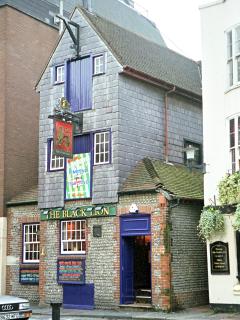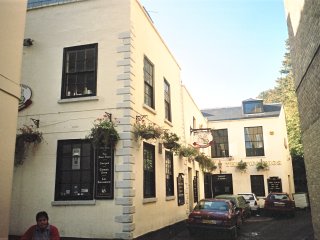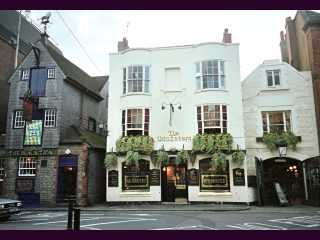Pictures of Brighton, where much of the action of The Devil's Heiress takes place.
First, a section of the grand houses on the Marine Parade. (Sorry for the Tower of Pisa tilt in the pictures.) Maria and Van hire one of these while their house in the country is undergoing renovations. It therefore becomes a sort of headquarters for the Georges and the Rogues as necessary. These are substantial three story houses directly facing the sea, and they are all hotels now, sometimes combining many of these houses. The corner house had the door on the side, so for each tier of bow or bay windows there was one regency house.
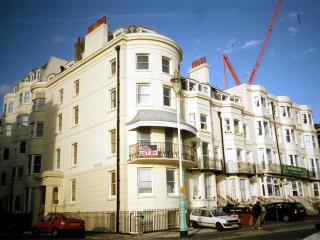

By contrast we have a three story house in one of the side streets. It is still substantial by Regency Brighton standards, though clearly fallen on hard times. A lot of this almost sea-front Georgian property is in a sad state, used for student and social assistance housing. The center of Brighton is cramped and full of tourists so it's not prime real estate. The blocked up windows probably give onto the stairs and were blocked off to avoid window tax, quite possibly before the regency. The next picture is of the whole street, including some still with their period balconies. You can see the sea at the end. I think this is Broad Street where Clarissa has her house.
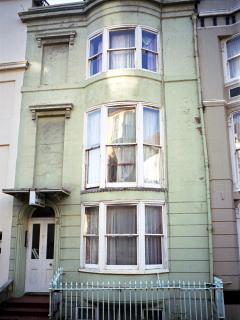
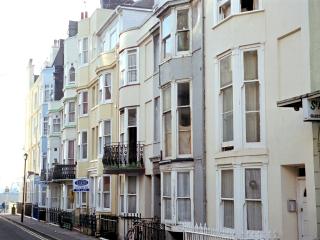
Charles Street, where I originally intended to put Clarissa's house, but these houses are really small -- just two modest rooms on each floor. (I embarrassed my husband by speaking to someone going into one and asking for a peep. A narrow corridor to stairs at the back, and two rooms about 12 x 12.) Also, the street is extremely narrow. I wasn't sure the duke's traveling coach would even fit! Even so, they were acceptable residences in the Regency. Regency people, even the upper classes, were accustomed to living in small spaces when in a town, especially in a place like Brighton where one expected to be outside a great deal, or enjoying events in the various public buildings. Thanks to Gary Crucifix and his father whom I found on the web, and who sent me these pictures so I could correct that detail early in the book. The street view looks away from the sea, but the sea front is just behind the camera.

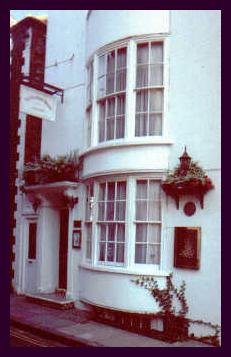
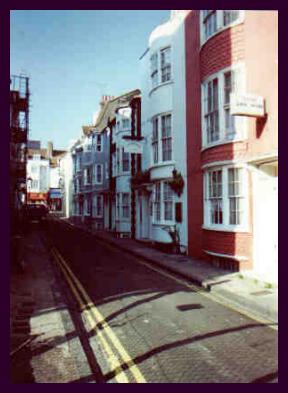
The Steyne. (Or Steine, pronounced Steen.) The Steyne was an open area which was the social center of Regency Brighton, so houses there were very fashionable, but not for those who liked privacy and quiet. At the time there were no trees. (See link to old picture below.) This was remarked upon by visitors to Brighton, and it was one reason people liked to drive out to the country -- to see the trees. The second picture shows the eastern terrace looking onto the Steyne.Detail of a house on the Steyne.It's quite large, but plain. You can see the usual railings surrounding the well containing the servants' steps down into the basement..
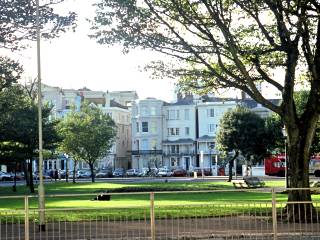
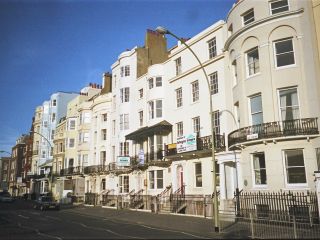
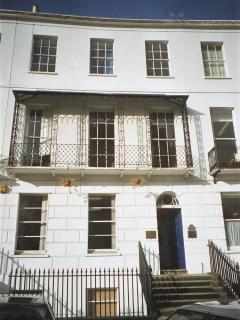
Three inns in Brighton showing different ages and styles.
